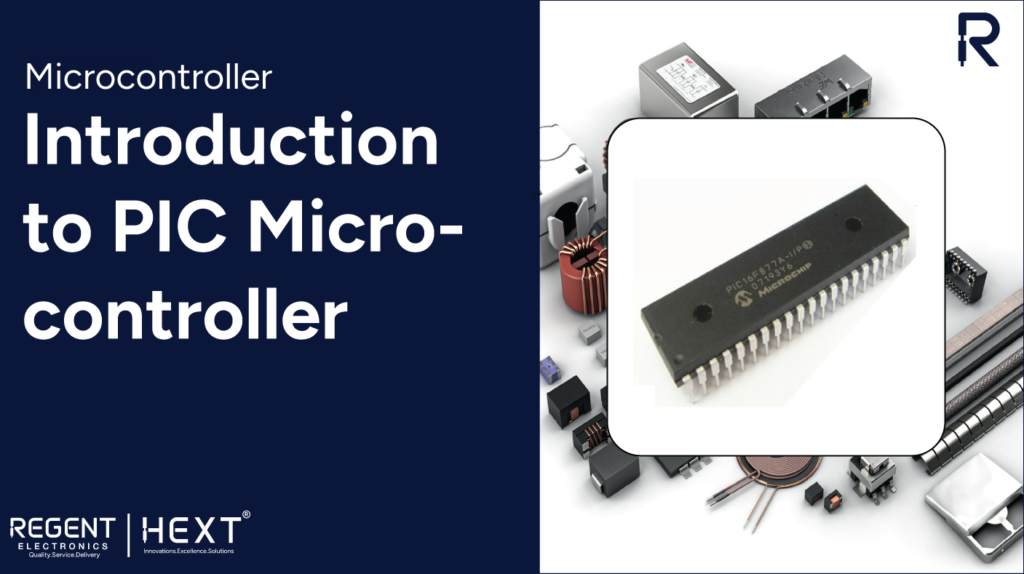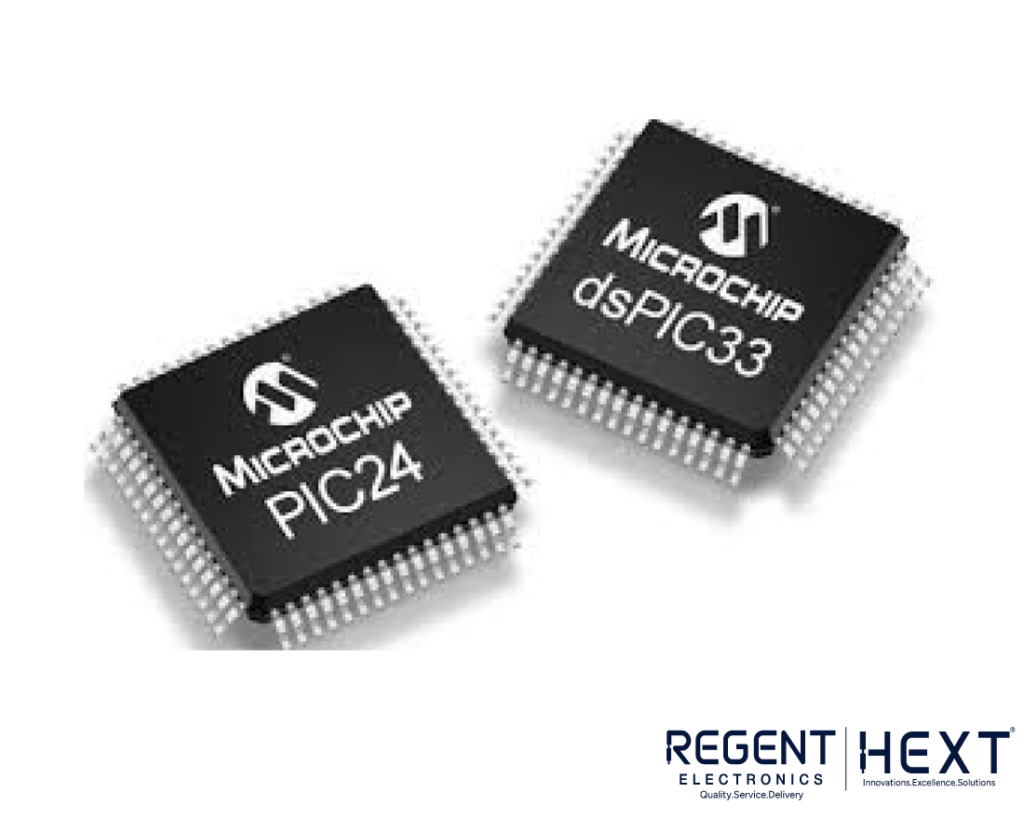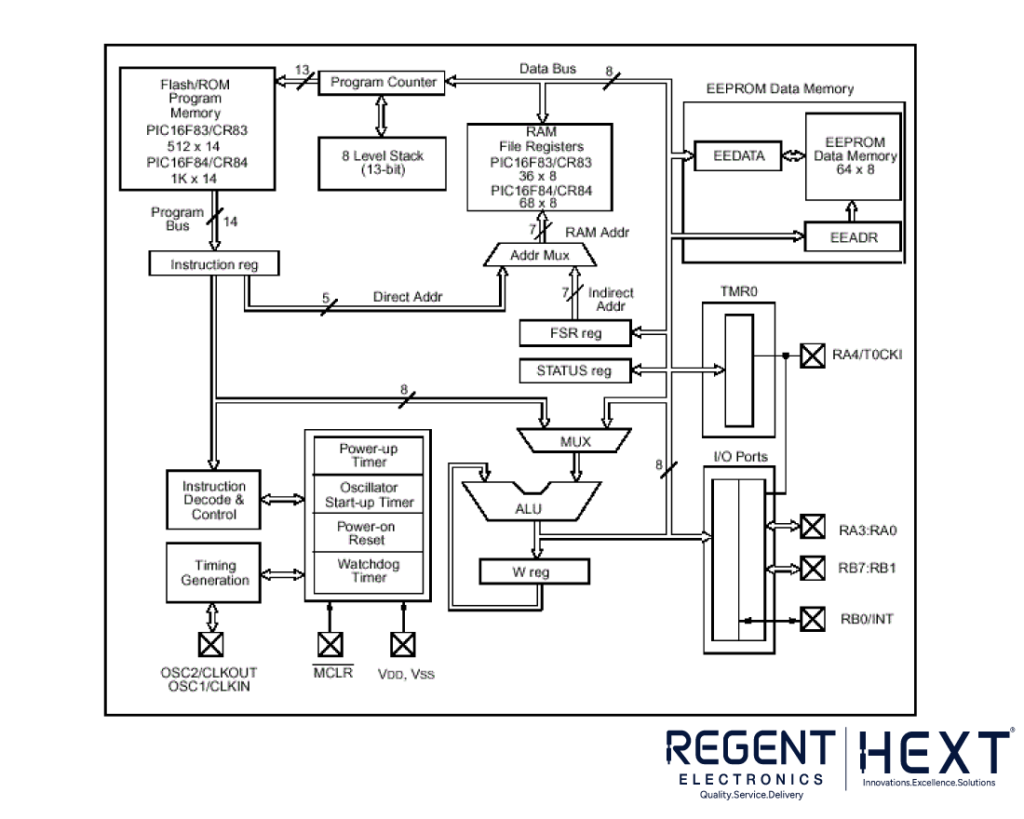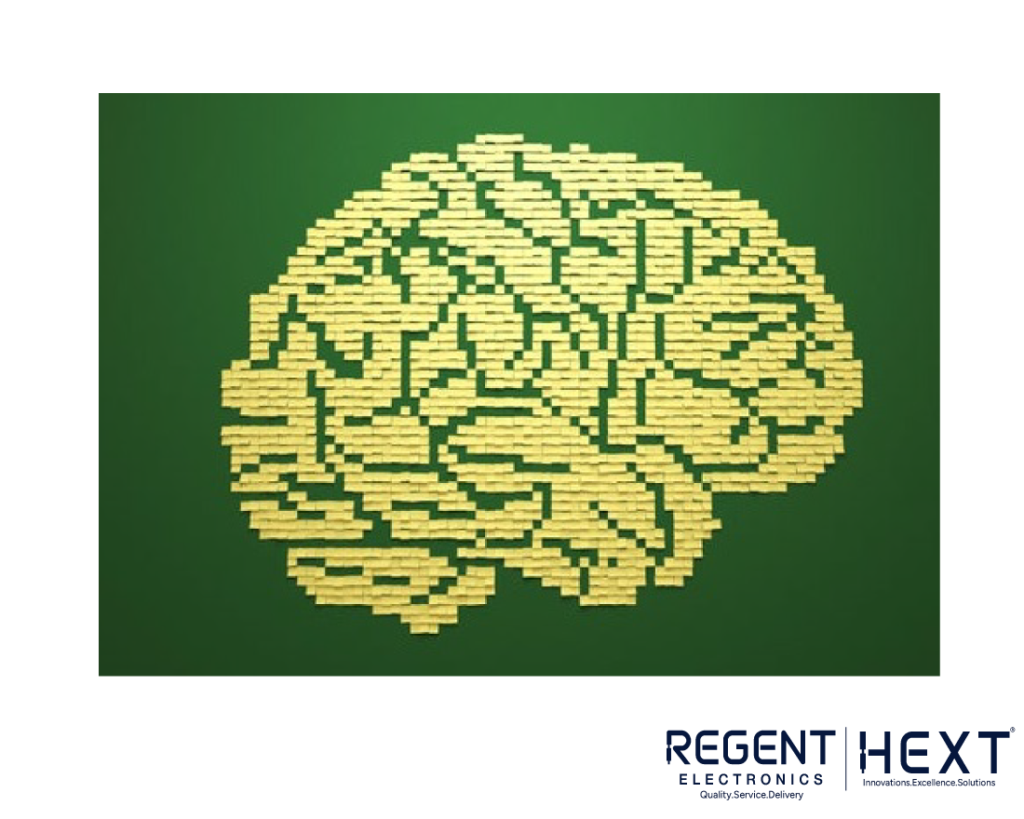
Introduction to PIC Microcontroller
In this blog, we will explore the introduction of the PIC microcontroller, its applications, and why it is widely used in embedded systems.

What is a Microcontroller?
A PIC (Peripheral Interface Controller) microcontroller is a compact, integrated circuit designed by Microchip Technology. Initially known as a Peripheral Interface Controller, it is now often referred to as a Programmable Intelligent Computer. The widespread adoption of PIC microcontrollers is due to their compatibility with both hobbyists and industrial developers.

Applications of PIC Microcontroller
PIC microcontrollers are extensively used in various applications such as smartphones, medical devices, and telecommunication devices. Their key feature is the ability to store and execute programs efficiently.
Key Components of PIC Microcontrollers:
- Processor
- Memory (RAM, ROM, EPROM)
- Input/Output Ports
- Serial and Parallel Ports
- Timer and Counter
- A-D Converter or D-A Converter
- Flash Memory (Program Memory)
- SRAM Memory (Data Memory)
- Crystal Oscillators
Architecture of PIC Microcontroller

Understanding the architecture of a microcontroller is essential for effective utilization. PIC microcontrollers support RISC (Reduced Instruction Set Computer) architecture, which includes:
- Only 35 commands in an instruction set
- Most instructions are single-cycle (2 or 4 clock cycles in 8-bit models)
- Execution time calculation based on clock frequency
PIC16F8X Block Diagram
The architecture consists of the following key components:
CPU (Central Processing Unit)
The CPU includes an Accumulator, Arithmetic Logic Unit (ALU), and Control Unit. It follows RISC architecture principles, ensuring efficient processing.
Memory System

PIC microcontrollers have various types of memory, including:
- ROM: Stores permanent data.
- EEPROM/EPROM: Similar to ROM but allows data erasure and reprogramming.
- RAM: Stores temporary data that is erased when power is lost.
- Flash Memory: Supports multiple read, write, and store operations.
ADC & DAC
- Analog-to-Digital Converter (ADC): Converts analog voltage into digital values.
- Digital-to-Analog Converter (DAC): Converts digital signals back into analog format.
- ADC in PIC microcontrollers has a 10-bit resolution and operates at 5V.
Input/Output Ports
PIC microcontrollers contain multiple ports for interfacing with external devices. The PIC16 family includes five ports:
- Port A: 16-bit input/output port.
- Port B: 8-bit input/output port with interrupt capability.
- Port C: 8-bit input/output port controlled via the TRISC register.
- Port D: Functions as a slave port for microcontroller bus connection.
- Port E: 3-bit port for control signals in ADC applications.
Oscillators
Oscillators generate clock signals required for microcontroller operations. PIC microcontrollers support two types of oscillators:
- RC Oscillator: Frequency depends on resistor and capacitor values.
- Crystal Oscillator: Operates based on an external crystal, ensuring precise frequency generation.
Timer & Counter
PIC microcontrollers feature built-in timers for:
- Generating precise delays
- Pulse counting and measurement
- Operating three timers (two 8-bit and one 16-bit)
CCP Module (Capture, Compare, PWM)
The Capture/Compare/PWM (CCP) module is used for:
- Capture Mode: Accessing real-time register values.
- Compare Mode: Comparing register values for triggering events.
- PWM Mode: Generating signals with varying frequency and duty cycle.
Advantages of PIC Microcontrollers
- Reliable with minimal malfunction rates.
- High-speed performance due to RISC architecture.
- Low power consumption.
- Easy interfacing and direct connection with analog devices.
- Simple programming compared to other microcontrollers.
Disadvantages of PIC Microcontrollers
- Requires lengthy programming due to RISC limitations (35 instructions).
- Limited program memory accessibility.
- Single accumulator restricts certain operations.
Applications of PIC Microcontrollers
PIC microcontrollers are widely used in educational and industrial sectors. Common applications include:
- Automatic street light intensity controllers
- Industrial object counters
- Automatic hand sanitizers
- Color object sorting machines
- RFID-based door lock systems
- Smart irrigation systems
- Fingerprint-based locker systems
- Face detection attendance systems
Conclusion
PIC microcontrollers are powerful tools for embedded system development. With their robust architecture and versatile applications, they provide an efficient platform for various automation projects. We hope this guide provides a clear understanding of PIC microcontrollers. For any queries, feel free to leave a comment below!
